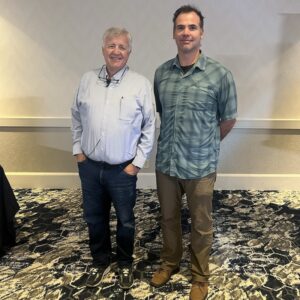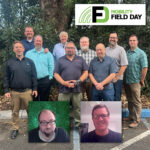|
|
 Keith Parsons and Troy Martin Presented Ignite Tech Field Day Sessions at Mobility Field Day 10 |
This Presentation date is November 16, 2023 at 9:00-10:00.
Presenters: Tom Hollingsworth
Follow on Twitter using the following hashtags or usernames: #MFD10
Probability of Collisions with Troy Martin
Watch on YouTube
Watch on Vimeo
In this Ignite Talk, Troy Martin delves into the probability of collisions in Wi-Fi networks, drawing parallels to the unpredictability of lineups at theme parks. He explains that despite adding more capacity, the variability in arrival times still leads to congestion, similar to how Wi-Fi frames contend for transmission opportunities. Martin introduces the concept of the space airtime domain, inspired by Einstein’s space-time domain, to visualize the gaps between Wi-Fi transmissions. He discusses the politeness of Wi-Fi protocols in avoiding collisions and the role of random number generation in managing medium contention. By incorporating Quality of Service (QoS), Wi-Fi can prioritize certain types of traffic, reducing transmission delays and improving overall efficiency. Martin also touches on the complexity of calculating collision probabilities using Markov chain models, which consider various dynamic factors like airtime utilization, signal-to-noise ratio, and distance from access points. He concludes by emphasizing the blend of art and science in Wi-Fi design, advocating for efficiency improvements through reduced transmission gaps.
Personnel: Troy Martin
Transmitting a Single Frame Across the RF Medium from Keith R. Parsons
Watch on YouTube
Watch on Vimeo
In his Ignite Talk, Keith R. Parsons delves into the intricate process of transmitting a single frame of data across a wireless access point, emphasizing the significant overhead involved. He explains that while factors like channel width and modulation coding schemes (MCS) can affect the payload portion of the transmission, the majority of the process is dominated by protocol overhead, including arbitration time, preambles, and control frames like RTS and CTS. Parsons highlights that even with advancements such as wider channels in Wi-Fi 7, the overall transmission time for a single frame remains largely unchanged because the overhead components stay constant. He encourages the audience to use tools like Garamond’s calculator to visualize these dynamics and understand that improvements in data rates primarily impact the payload, not the total transmission time.
Personnel: Keith R. Parsons









